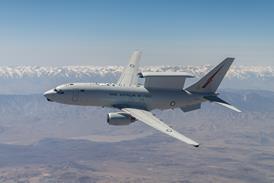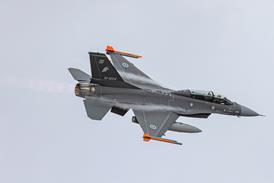Boeing expects the anti-turbulence technology on the 787 will provide "an eight-fold reduction" in passenger air sickness, and has the potential for development into a predictive system for future aircraft.
The manufacturer has tested its "smoother ride" technology using a simulator and 777 testbed. Turbulence is detected by existing fly-by-wire system sensors, which then use the flaperons to counter vertical gusts and dampen out turbulence before it reaches the passenger cabin.
"It truly has a lot of potential," says 787 regional director for product marketing Samir Belyamani. "It has been through testing and it looks very positive."
Belyamani says that moderate vertical gusts, which are sensed and immediately moderated by the system, are one of the key causes of passenger motion sickness.
"It's quite a big difference. We're not going to be able to completely eliminate turbulence, but eliminating those slow ups and downs - that rolling feeling - will provide about an eight-fold reduction in the number of passengers who suffer motion sickness.
"In the future, the next step - and even Airbus is looking at this - is having sensing systems that actually look ahead to see the turbulence before. That's really the next step, but that technology isn't quite ready yet."
Related Blogs
Related stories
- 787 Special - Systems advance
- A step too far?
- Boeing tackles tail-wag problem on United 777s
- Airbus A340 takes off to test anti-drag technology
- For more news, pictures and information about the Boeing 787 Dreamliner, please visit our 787 Aircraft Profile page
Source: FlightGlobal.com























